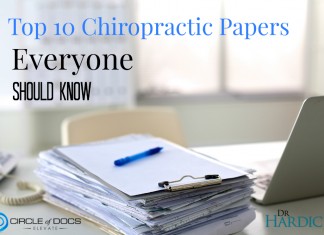Troyanovich SJ, Harrison DE, Harrison DD
University of Alabama, Huntsville, USA
OBJECTIVE: To provide a rationale for active chiropractic rehabilitative treatment that extends beyond the single goal of resolution of symptomatic complaints.
DATA COLLECTION: A manual search of available reference texts and a search of MEDLINE were collected with an emphasis on tissue healing sequelae and the role of mechanical loading on this process.
RESULTS: The reviewed material indicates that all tissue growth and repair is influenced by mechanical loading and body posture and is positively affected by body postures that normalize/minimize adverse mechanical stresses and strains. Altered alignment of the human frame may lead to poor healing of the body tissues and eventual pathological architectural changes may occur in muscle, ligament, bone and central nervous system. Minimization of altered postural/structural loading of the human frame may take longer than resolution, or maximal reduction, of offensive symptoms. By itself, a patient’s perception of pain is not a valid indicator of health.
CONCLUSION: Because mechanical loading of the neuromusculoskeletal tissues plays a vital role in influencing proper growth and repair, chiropractic rehabilitative care should focus on the normalization/minimization of aberrant stresses and strains acting on spinal tissues. Manipulation alone cannot restore body postures or improve an altered sagittal spinal curve. Therefore, postural chiropractic adjustments, active exercises and stretches, resting spinal blocking procedures, extension traction and ergonomic education are deemed necessary for maximal spinal rehabilitation. Chiropractic studies that demonstrate structural improvements are sorely lacking and needed. The use of passive treatment modalities as the sole means of chiropractic intervention for the management of patients suffering with neuromusculoskeletal dysfunction no longer has a place in modern chiropractic practice after the acute phase of healing has passed.








